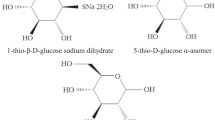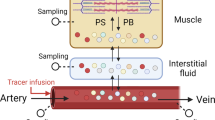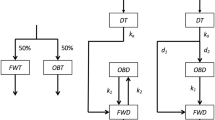Abstract
PRESENT interest in the assay of peptide hormones has led to the development of radio-immunoassay methods. These are based on the competition for antibody by labelled and unlabelled hormones, and the subsequent separation of antibody-bound from ‘free’ radioactivity1. 131I-labelled hormones have the practical disadvantage of the short eight-day half-life of 131I, and the theoretical disadvantage that iodination tends to destroy the biological potency of the hormones. With these considerations in mind, we have prepared tritium-labelled hormones of high specific activity using the technique of acetylation. In general, between 0.2 and 1.0 µmoles of hormone are mixed with 25 me. (7 µmoles) tritiated acetic anhydride (3,570 mc./mmole from Nuclear Chicago Corporation) in 0.25 ml. water saturated with sodium acetate and adjusted to pH 8.0–8.5 with 0.1 N NaOH. The acetylated hormone is then separated from the free acetate by passing the mixture through a 2 × 15 cm ‘Sephadex G-25’ column. With this technique we have prepared tritium-labelled human growth hormone (3.2 acetyl/mole, 275 µc./mg) tritium-labelled bovine growth hormone (12 acetyl/mole, 570 µc./mg), and tritium-labelled pork insulin (127 µC./mg, 0.5 acetyl/mole). Human and bovine growth hormone acetylated to this extent with 14C-labelled acetic anhydride have previously been demonstrated to be biologically and antigenically comparable with unlabelled hormone2,3.
This is a preview of subscription content, access via your institution
Access options
Subscribe to this journal
Receive 51 print issues and online access
$199.00 per year
only $3.90 per issue
Buy this article
- Purchase on Springer Link
- Instant access to full article PDF
Prices may be subject to local taxes which are calculated during checkout
Similar content being viewed by others
References
Yalow, R. S., and Berson, S. A., Nature, 184, 1648 (1959).
Collipp, P. J., Kaplan, S. A., Boyle, D. C., and Shimizu, C. S. N., Metabolism, 13, 532 (1964).
Collipp, P. J., Kaplan, S. A., Boyle, D. C., and Shimizu, C. S. N., J. Biol. Chem., 240, 143 (1965).
Author information
Authors and Affiliations
Rights and permissions
About this article
Cite this article
COLLIPP, P., KAPLAN, S., BOYLE, D. et al. Tritium-labelled Peptide Hormones with High Specific Radioactivity. Nature 207, 876–877 (1965). https://doi.org/10.1038/207876a0
Issue Date:
DOI: https://doi.org/10.1038/207876a0
This article is cited by
-
Radioimmunoassay of Bradykinin
Nature (1967)
-
Effect of Acetylation on the Biological Activity of Pregnant Mare Serum Gonadotrophin
Nature (1967)
Comments
By submitting a comment you agree to abide by our Terms and Community Guidelines. If you find something abusive or that does not comply with our terms or guidelines please flag it as inappropriate.



